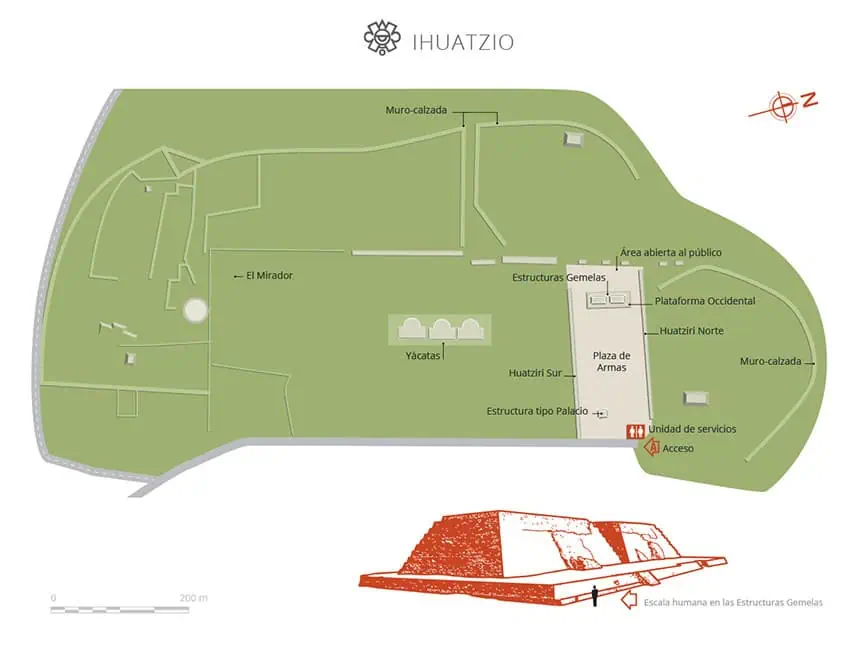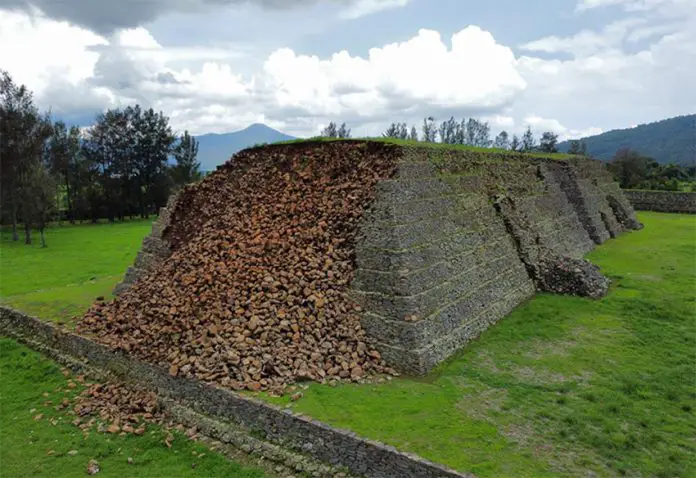A promise by the National Institute of Anthropology and History (INAH) to extensively repair a rain-damaged, pre-Columbian structure in Michoacán doesn’t change the fact: Some Purépecha descendants have taken the pyramid collapse as a sign of impending doom.
On July 29, heavy rains caused portions of a stone-slab foundation — built roughly 700 years ago to support a pyramid — to crumble at the Ihuatzio Archaeological Zone on the shores of Lake Pátzcuaro.
Though it had stood for centuries, the foundation developed cracks during the periods of intense heat and drought that preceded the recent downpours, scientists said. The presence of fissures allowed a lot of water to seep in, causing the crumbling.
While Ihuatzio is not a large archeological site — only seven of its more than 84 structures are visible — it was the first main center of the Purépecha Empire, a civilization that resisted conquest attempts by the Aztecs and, later (at least initially) by Spanish colonizers.
Its pyramids, built around the 14th century, were used for astronomical observation and religious ceremonies and rituals, including human sacrifices dedicated to deities such as K’eri Kurikaueri, the “Great Fire.”
From Ihuatzio, meticulously built on an artificially leveled plateau, the Purépecha (also known as the Tarascan people) managed to conquer smaller communities, consolidating their control over a vast region.

The collapse of the pyramid base was interpreted as a “bad omen” among descendants of the Purépecha community in Michoacán, at least according to dozens of media reports that seemed to rely either on one Facebook post or on earlier media reports.
Apparently, similar events occurred before the arrival of the Spanish conquistadors in the early 1520s. And since the Spanish eventually conquered the Purépecha in the late 1530s, those events came to be interpreted as signs of impending doom.
“For our ancestors, the builders, this was a bad omen that indicated an important event was approaching,” Purépecha descendant Tariakuiri Alvarez wrote on Facebook. “Before the arrival of the conquerors, according to historical accounts, something similar happened, and in the worldview of the Purépecha of the time, it was because the gods Nana Kuerhaépiri and K’eri Kurikaueri were angry.”
In a press release issued last week, INAH ignored the “omen” angle while pointing out that restorative work was underway. In addition to repairing visible damage, it will also include extensive work to improve the stability and future of the structure, INAH said.
Officials said this will be done using modern techniques not used in previous restorations — which actually had negative effects on the condition of the structure, officials added.
INAH also noted that the site was insured, and that the agency is working with the Agroasemex Insurance Company to get funds necessary for the repairs.
According to the online newspaper Infobae, the National Water Commission (Conagua) indicated that localities in Michoacán received, on average, 268.6 mm (10.75 inches) of rain in July, following 93.6 mm in June. The total in each of the preceding five months was no more than 14 mm.
INAH said at least six areas of the foundation suffered damage.
The incident left archaeologists and others wondering whether increasingly extreme weather is putting Mexico’s cultural heritage at risk.
With reports from DW, La Jornada Oriente, Daily Mail, Infobae and MiMorelia.com
